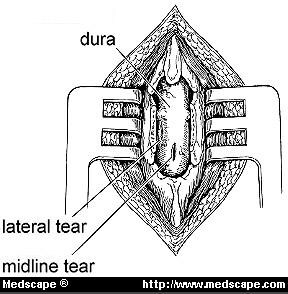

A local anesthetic is injected into your lower back to numb the puncture site before the needle is inserted.Your back is washed with antiseptic soap or iodine and covered with a sterile sheet.įor an infant or a young child, someone will hold the child in position during the procedure.

These positions flex your back, widening the spaces between your vertebrae and making it easier for your health care provider to insert the needle. Usually, you lie on your side with your knees drawn up to your chest, or you sit and lean forward on a stable surface. There are a few possible positions for a lumbar puncture (spinal tap). You may be asked to change into a hospital gown, although in some cases you may have the procedure while wearing your own clothing. Talk to your child's health care provider about whether this will be possible. If a child is having a lumbar puncture, a parent may be allowed to stay in the room in some cases. Your health care provider will talk to you about the potential risks, and any discomfort you might feel during the procedure. What you can expectĪ lumbar puncture (spinal tap) is usually done in an outpatient facility or a hospital. Also, tell your provider if you're allergic to any medications, such as numbing medications (local anesthetics). Examples include warfarin (Jantoven), clopidogrel (Plavix) and apixaban (Eliquis). Tell your provider if you're taking blood-thinning or other anticoagulant medications. Your health care provider will give you specific instructions about food, drink and medications. Your provider may also recommend a CT scan or MRI to determine if you have any abnormal swelling in or around your brain. A detailed neurological examination can also help rule out a significant space-occupying lesion.īefore your lumbar puncture (spinal tap), your health care provider takes your medical history, does a physical exam, and orders blood tests to check for bleeding or clotting disorders. To prevent this rare complication, a computerized tomography (CT) scan or magnetic resonance imaging (MRI) scan is often performed before a lumbar puncture to look for any sign of a space-occupying lesion resulting in increased intracranial pressure. Increased pressure within the skull due to a brain tumor or other space-occupying lesion can lead to compression of the brainstem after a sample of cerebrospinal fluid is removed. Bleeding may occur near the puncture site or, rarely, in the epidural space. The pain might radiate down the back of your legs. You may feel pain or tenderness in your lower back after the procedure. Post-lumbar puncture headaches can last from a few hours to a week or more. The headaches are usually present when sitting or standing and resolve after lying down. The headache typically starts several hours up to two days after the procedure and may be accompanied by nausea, vomiting and dizziness. As many as 25% of people who undergo a lumbar puncture develop a headache afterward due to fluid leaking into nearby tissues. Although lumbar puncture (spinal tap) is generally recognized as safe, it does carry some risks.


 0 kommentar(er)
0 kommentar(er)
